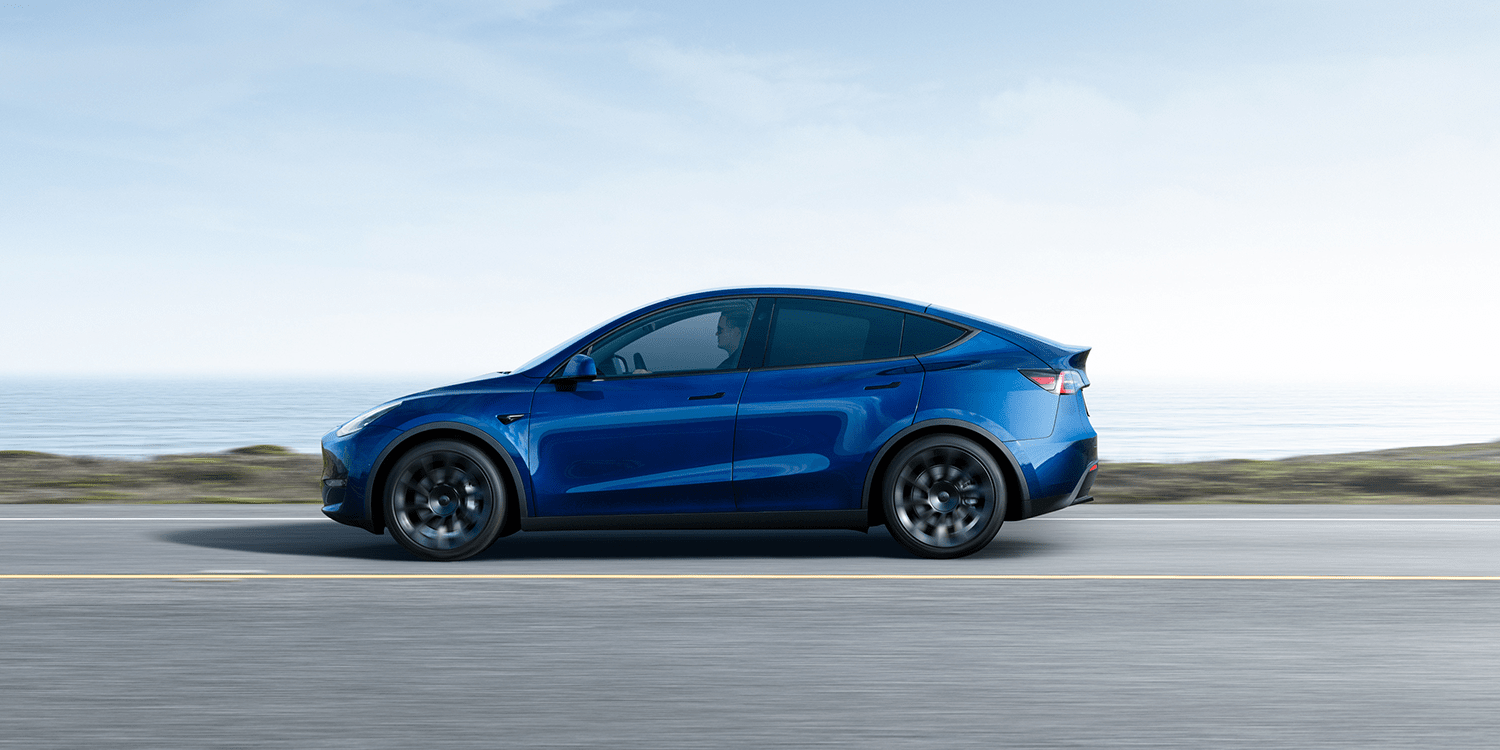There's always room in life for a Plaid!So, my last car????
Welcome to Tesla Motors Club
Discuss Tesla's Model S, Model 3, Model X, Model Y, Cybertruck, Roadster and More.
Register
Install the app
How to install the app on iOS
You can install our site as a web app on your iOS device by utilizing the Add to Home Screen feature in Safari. Please see this thread for more details on this.
Note: This feature may not be available in some browsers.
-
Want to remove ads? Register an account and login to see fewer ads, and become a Supporting Member to remove almost all ads.
You are using an out of date browser. It may not display this or other websites correctly.
You should upgrade or use an alternative browser.
You should upgrade or use an alternative browser.
Should LFP batteries be charged to 100%?
- Thread starter SaffaT3sla
- Start date
Likewise, I drive about 5000 miles a year. So the M3 battery should be good for 20 years.... when I'll be 90.This was a really interesting read and about the best explanation I've came across.
It also makes me happier about my plan of keeping my Tesla Model 3 SR+ MIC I've ordered until it literally stops working some day in the far far away future.
IF I'm still here.
So, my last car????
ErikJupiter
Closed
As I understand it MIC cars/LFP batteries remove the whole “daily” and “trip” advisories on charging, which would suggest that it’s fine to charge them to 100% every time.
As said above this would have an effect on regenerative braking.
The NCA batteries can be charged to 100%, my understanding is that the advice is not to leave it at a high SoC for extended periods. That being said I believe you get a warning popup in the car if you charge to 100% for 3 consecutive days.
I supposedly took delivery of an LFP SR+. My delivery sales person was not particularly confident when I asked that question. In the waiting room thread, a couple users have suggested that some of the cars recently delivered have actually been NIC vehicles on canceled orders. So, I’m wondering how to tell whether my car is actually an LFP battery pack car. When I plugged it in at home, and selected the charge limit of 100%, I did NOT see a “daily” and “trip” advisory. Perhaps that is a good indicator that I do indeed have an LFP vehicle?
HenryT
Active Member
I think that is what I've seen referred to also. No daily/trip limits = LFP.I supposedly took delivery of an LFP SR+. My delivery sales person was not particularly confident when I asked that question. In the waiting room thread, a couple users have suggested that some of the cars recently delivered have actually been NIC vehicles on canceled orders. So, I’m wondering how to tell whether my car is actually an LFP battery pack car. When I plugged it in at home, and selected the charge limit of 100%, I did NOT see a “daily” and “trip” advisory. Perhaps that is a good indicator that I do indeed have an LFP vehicle?
SR-Plus
Member
Apparently Tesla has a 60kwh variant of the LFP battery. I think Bjorn Nyland also mentioned about an increased capacity in one of his SR+ cars he tested recently.
when do we think these cars might come to the UK?

when do we think these cars might come to the UK?

Lord Farquad
2022 MYLR W/B/20s/Tow bar. Previously 2021 M3SR+
I think Bjorn showed the 55kwh LFP originally had a large “buffer” so only 49kwh useable. After a recent OTA update it now has 53kwh usable (smaller buffer) due to better management software. I imagine that’s a worldwide update to all the 55 LFPs?
ErikJupiter
Closed
I took delivery yesterday of an LFP car here in the U.S. Right now at 100% it is about 250 miles. However, on other threads I see recent purchasers, after an update, getting 262.Can anyone with a LFP car confirm this please? Does the GOM range in miles / km increase? Thanks
Mine shows 264 (miles) range after a 100% charge, the same as it showed when I collected it 6 months ago.Can anyone with a LFP car confirm this please? Does the GOM range in miles / km increase? Thanks
I don’t consider that reading to be particularly relevant, what matters is what you actually achieve, that of course varies every time you drive (subject to all the factors that determine what range you get (such as ambient temperature, rain/ dry roads, speed you drive at, etc etc)
I’m unable to tell you if that range has changed following any of the OTA updates I’ve had since I collected the car.
The buffer may have decreased by 4 kWh but due to the miriad of factors controlling actual range I believe it’s impossible to say if any additional (or less) achieved range might be due to buffer reduction or other controlling factors.
SR-Plus
Member
Thanks for your replies.
I currently have a Fremont car so I understand that the range can vary depending on conditions and use but that’s a good start if it shows 264 initially.
On one road trip my car showed 223 on a 100% charge but I was able to get around 235 with some careful driving.
I currently have a Fremont car so I understand that the range can vary depending on conditions and use but that’s a good start if it shows 264 initially.
On one road trip my car showed 223 on a 100% charge but I was able to get around 235 with some careful driving.
The European owners manual is clear on how to determine if you have an LFP battery pack:So, I’m wondering how to tell whether my car is actually an LFP battery pack car
ErikJupiter
Closed
Thanks for posting that. My U.S. manual does not have that section.The European owners manual is clear on how to determine if you have an LFP battery pack:
View attachment 708875
Thanks for posting that. My U.S. manual does not have that section.
I'd assume that when the manual gets its next update it will include that section as some US vehicles are now being supplied with LFP packs.
Here is the additional detail applicable to LFP vehicles:
ErikJupiter
Closed
Super helpful. Thank you. I expect one reason they recommend to charge to 100% at least once a week is that the LFP battery voltage does not drop significantly as the battery discharges, making it difficult for the car to calculate range. Fully charging once in a while gives the car more data to calculate range.I'd assume that when the manual gets its next update it will include that section as some US vehicles are now being supplied with LFP packs.
Here is the additional detail applicable to LFP vehicles:
View attachment 708910
View attachment 708912
artofsnow
Member
Mine (from Dec 2020), showed 418km (~259-260 miles) for months ... and since I've been on 2021.24.x, it's been slightly decreasing (lost a few km/miles).Mine shows 264 (miles) range after a 100% charge, the same as it showed when I collected it 6 months ago.
ThisOur Fiesta only does 50mpg; what happened to the other 20mpg I paid for? [Just an inappropriate jest ... but ... you know ...] In truth the electric car world probably does slightly better than the petrol world in representing its ranges but we're working with smaller margins so, understandably, it does make us panic a bit!
Difference in range between advertised and achieved is not an electric car problem!
Besides, my last ICE car only had a range IRL of 290 miles, and it was costing £85 to fill up every time. I'll panic far less about using 'fuel' when I pick up my M3 on Wednesday.
Eh? Why would regen braking not be in full effect?Yes, Elon has stated that the new battery is fine charged to 100% regularly. Obviously if you do this regen braking wont be in full effect.
Unless you fully charge and then immediately start rolling down a hill, you should have used more energy to get up to your speed than you can recover with regen (it isn't 100% efficient) - so it's not as though the battery would be too full to take back the energy.
Am I missing something?
Eh? Why would regen braking not be in full effect?
Unless you fully charge and then immediately start rolling down a hill, you should have used more energy to get up to your speed than you can recover with regen (it isn't 100% efficient) - so it's not as though the battery would be too full to take back the energy.
Am I missing something?
Possibly because regen strength doesn't have linear correlation with the SoC. I don't know for sure but it seems plausible that at high SoC like 95%+ there would be some drop off.
At max. regen the energy created is more than can safely be put into the battery pack when it is almost fully charged. The charge rate has to be greatly reduced to avoid overcharging individual cells.Eh? Why would regen braking not be in full effect?
Unless you fully charge and then immediately start rolling down a hill, you should have used more energy to get up to your speed than you can recover with regen (it isn't 100% efficient) - so it's not as though the battery would be too full to take back the energy.
Am I missing something?
Lord Farquad
2022 MYLR W/B/20s/Tow bar. Previously 2021 M3SR+
What usable capacity do you think you’re Mic LFP has? Ive got a 2021 SR+ Mic which was delivered on the 30th Sep. I’ve done 500 miles and it’s bloody fast and very efficient. My first 500 miles have been around 200wh/mi.
But……
On my current charge I’ve averaged 186wh/mi, covering 70 miles and used 29% (13kWh). Unless my Maths is out that only gives me a 44-45kWh battery. I thought these were 55kWh with a usable around 53kWH? I’m up to date with software.
The Energy graph is predicting 212mi and the basic range display is 184mi remaining.
Effectively the % seems the odd one out.
Thoughts?
But……
On my current charge I’ve averaged 186wh/mi, covering 70 miles and used 29% (13kWh). Unless my Maths is out that only gives me a 44-45kWh battery. I thought these were 55kWh with a usable around 53kWH? I’m up to date with software.
The Energy graph is predicting 212mi and the basic range display is 184mi remaining.
Effectively the % seems the odd one out.
Thoughts?
Similar threads
- Replies
- 42
- Views
- 2K
- Replies
- 3
- Views
- 1K
- Replies
- 54
- Views
- 18K



